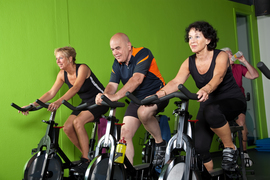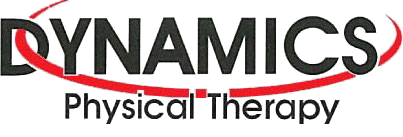Ensuring that your body’s cells are young and healthy is one of the keys to staying young. Current research shows that there is a link between exercise and young, healthy cell DNA. The abbreviation DNA refers to deoxyribonucleic acid, which is the cellular (cell) material that facilitates cell development, growth, proper functioning, reproduction, and overall health. DNA often becomes damaged, but there are specific proteins in the body called telomeres that help protect persistent DNA damage from occurring. However, the size of these protective proteins shorten with age and this disrupts the DNA repair process, thereby leading to damaged cells, aging, and sickness.
 Interestingly, a fairly recent study showed that endurance exercise such as cycling boosts the production of telomeres, which prevents DNA from aging and in doing so sustains youth. The researchers explained that endurance exercise such as cycling releases energy molecules that support an increase in telomeres in skeletal muscle. This finding suggests that engaging in endurance exercises regularly promotes the rejuvenation of telomeres in muscle tissue. More specifically, this process ensures that these proteins can maintain their protective functions, which includes keeping us young.
Interestingly, a fairly recent study showed that endurance exercise such as cycling boosts the production of telomeres, which prevents DNA from aging and in doing so sustains youth. The researchers explained that endurance exercise such as cycling releases energy molecules that support an increase in telomeres in skeletal muscle. This finding suggests that engaging in endurance exercises regularly promotes the rejuvenation of telomeres in muscle tissue. More specifically, this process ensures that these proteins can maintain their protective functions, which includes keeping us young.
Another research study into older individuals who were highly active, non-elite cyclists demonstrated that the participants had similar levels of reflexes, memory, balance, and metabolism as younger individuals.
This is thought to be because physical functioning remains quite stable throughout age for people who maintain an active lifestyle, specifically through endurance and resistance exercises (cardio and weight training). Exercise also promotes healthy organs (e.g., lungs, heart), muscles, and vibrant skin. Exercise improves the circulation of blood oxygen, and essential nutrients to all of the body’s vital organs, including the skin. In other words, persistent physical activity helps keep your body young on both the inside and out.
If you are 55 years of age or older, or you recently suffered from a serious physical injury, it is especially important to safely engage in physical activity. For individuals who may frequently feel stiff and have lost mobility or full range of motion due to an injury, guided movements that are demonstrated by a physical therapist, for example, improve mobility and promote a quicker recovery. People who receive physical therapy also report feeling lower levels of fear during movement and less depression. This is especially beneficial as it encourages people to exercise regularly, which is the key to staying vital as you age. Therefore, physical therapy is a great option for individuals who need assistance with regaining their mobility and previous level of physical activity.
Furthermore, a physical therapist can show you how to incorporate different types of exercise techniques into your daily routine. This includes proper posture and lifting strategies that will reduce the occurrence of injury and help prevent your exercise routine from becoming interrupted. The physical therapists at Dynamics Physical Therapy are well-trained to provide a comprehensive assessment of your current physical states. This allows the physical therapist to design a plan that is specific for each client.
As research shows that exercise promotes health and youth on the mental, physical, and even cellular (cell) level; it is important to be able to stay active and regain full activity if you have been injured. The experts at Dynamics Physical Therapy can demonstrate safe movements and guide you through the recommended exercise regimen. Call Dynamics Physical Therapy today to speak with a trained professional who can assist you today.
References
1. Diman A, Boros J, Poulain F, Rodriguez J, et al. Nuclear respiratory factor 1 and endurance exercise promote human telomere transcription. Sci Adv. 2016; 2(7):e1600031.
2. Arnoult N, Karlseder J. Complex interactions between the DNA-damage response and mammalian telomeres. Nat Struct Mol Biol. 2015; 22:859-866.
3. Blackburn EH, Epel ES, Lin J. Human telomere biology: A contributory and interactive factor in aging, disease risks, and protection. Science. 2015; 350:1193-1198.
4. Pollock RD, Carter S, Velloso CP, Duggal NA, Lord JM, Lazarus NR, Harridge SD. An investigation into the relationship between age and physiological function in highly active older adults. J Physiol. 2015; 593(3):657-680.
5. Bo H, Jiang N, Zhang ZY, Ji LL, Zhang Y. Exercise and health: from evaluation of health-promoting effects of exercise to exploration of exercise mimetics. Sheng Li Ke Xue Jin Zhan. 2014; 45(4):251-256.
6. Sohil P, Hao PY, Mark L. Potential impact of early physiotherapy in the emergency department for non-traumatic neck and back pain. World J Emerg Med. 2017; 8(2):110-115.
7. Sullivan MJ, Adams H. Psychosocial treatment techniques to augment the impact of physiotherapy interventions for low back pain. Physiother Can. 2010; 62(3):180-189.


